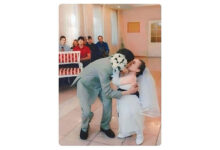The sad story of Genie Wiley
Over 50 years ago, a 13-year-old girl walked into a welfare office in Los Angeles, but she was unlike any child anyone had encountered before.
Delicate and with hands curled up like a scared rabbit, she was unable to speak and could hardly walk. She was named Genie — a name chosen to safeguard her identity — yet her story would astonish the country and question everything we believed about language, the brain, and human relationships.
Who was Genie Wiley?
Genie Wiley was born in 1957 in Arcadia, California. She could have been just like any other child — yet her name will always be associated with torture and abuse.
As the youngest of four siblings, she was the second oldest to survive in her family. Her father, Clark Wiley, served as a flight mechanic during World War II and continued in the aviation field afterward. Her mother, who was about 20 years younger and hailed from a farming family in Oklahoma, relocated to Southern California as a teenager with family friends fleeing the Dust Bowl.
Genie’s early years were marked by heartbreaking neglect and cruelty. Born five years after her brother John, she initially appeared healthy but encountered difficulties such as a congenital hip issue that delayed her ability to walk. This setback fueled her father’s cruel belief that she was mentally disabled, leading him to isolate and ignore her — even prohibiting her mother and brother from engaging with her.
As she matured, her father’s behavior grew increasingly frightening. Following a family tragedy, he descended into rage and paranoia, convinced that the outside world posed a danger. He imprisoned Genie in a small, dark room, tying her to a child’s toilet during the day and a crib at night, sometimes leaving her immobilized for hours. He forbade her from making any noise, and if she did, he would beat her. To silence her, he would growl like a dog and claw at her, instilling a profound fear of animals.
Genie’s diet consisted solely of baby food and liquids, often administered to her in a harsh manner, and she was seldom permitted outside or engaged in conversation. Her father maintained strict control over the entire family — no television, no radio, no ordinary discussions — ensuring that Genie was deprived of hearing normal language or experiencing sunlight.
Her mother, who was mostly blind and lived in fear, was unable to protect her and faced beatings herself if she attempted to assist. Even Genie’s brother was silenced and occasionally coerced into participating in the abuse. Despite assurances that help would arrive when Genie turned 12, her father reneged on his promise, and the torment persisted until she was eventually found.
One of the worst child abuse cases
When Genie’s mother finally made her way to the welfare office with her, she accidentally entered the wrong room, but what unfolded next would alter many lives forever.
The personnel at the Los Angeles social workers’ office first thought they were facing a case of undiagnosed autism — however, the shocking reality soon emerged.
Doctors labeled her as the most severely damaged child they had ever encountered.
Upon her discovery, Genie was still in diapers — a pale, delicate figure, scarred by years of neglect. Despite her brokenness, there was an unsettling beauty about her, with a face that strikingly resembled Anne Frank.
She had extra teeth, struggled to chew or swallow, and was unable to focus her eyes or control her limbs. Weighing only 59 pounds, she resembled a child half her age.
Researchers from across the nation came to study Genie, intrigued by the chance to comprehend how language develops, or if it could develop at all, when a child misses the crucial years of early life.

Genie learned a few simple words such as “blue,” “go,” and “mother.” She could draw, finish puzzles, and express herself without using speech. However, mastering grammar — the rules and structure of language — turned out to be impossible.
Scientists think that her brain’s “language window” had already closed. She moved in a peculiar “bunny walk,” often spat, and was unable to fully straighten her arms and legs. Quiet and incontinent, she struggled to chew properly, and initially, she seemed to only recognize her own name and the word “sorry.”
Nevertheless, Genie’s story ignited intense discussions among linguists, psychologists, and caregivers. Some viewed her as a miracle in the making, while others worried that she was fading away once more.
The tragic fallout
Unfortunately, after a brief period of improvement, Genie’s life fell back into despair. Shortly after she turned 18, Genie was returned to live with her mother. However, just a few months later, her mother confessed that she was unable to provide the necessary care for Genie. At her request, officials moved Genie into the first of many institutions and foster homes designed for adults with disabilities.
Regrettably, these settings were far from nurturing. Conflicts erupted among her caregivers. Financial support disappeared. She was moved from one foster home to another and shuffled through state institutions, kept out of the public eye.
The trauma had a significant impact: Genie’s health deteriorated sharply, and the advancements she had made in language and behavior quickly fell apart.
Those who had looked after her were left with lasting scars. UCLA linguist Susan Curtiss, who had formed a bond with Genie, still wishes to see her. In 2016, she shared with The Guardian:
“I’m fairly certain she’s still alive because I’ve inquired every time I called, and they assured me she’s doing well. They’ve never allowed me to have any contact with her. I feel powerless in my efforts to visit or write to her. I believe my last communication was in the early 1980s.”
Journalist Russ Rymer, who chronicled Genie’s tale in a bestselling book, states that it transformed him forever. He extensively reported on Genie’s story in the 1990s through two articles in the New Yorker and his book Genie: A Scientific Tragedy, describing the images from her 27th birthday as profoundly sorrowful. He depicted her as “a large, bumbling woman with a facial expression of cowlike incomprehension … her eyes focus poorly on the cake.” He also remarked that her “dark hair [was] hacked off raggedly at the top of her forehead, giving her the aspect of an asylum inmate.”

To this day, the fate of Genie remains an enigma. It is thought that she still resides in state care somewhere in California, but her location is kept confidential. As of 2024, Genie would be around 67-68 years old.
Her narrative serves as a poignant reminder of the strength of the human spirit and the tragic consequences of abuse and neglect. Genie was not merely a subject of scientific interest — she was a person deprived of her childhood.
The impact of Clark Wiley’s abuse lingered with Genie’s brother, John. After suffering through the beatings and witnessing his sister’s pain, he shared with ABC News in 2008, “At times, I feel like God let me down. Perhaps I let Him down too.” John last saw Genie in 1982 and eventually lost touch with their mother, who passed away in 2003. “I tried to forget [Genie] because of the shame. But I’m relieved she received some assistance.”
John encountered his own challenges; following some legal troubles, he settled in Ohio as a house painter. He got married and had a daughter named Pamela, but the marriage ended in divorce, and Pamela, Genie’s niece, struggled with addiction.
In 2010, police discovered Pamela inebriated and charged her with endangering her two daughters — Genie’s grandnieces. Unfortunately, there was no miraculous resolution. John, who battled diabetes, passed away in 2011, and Pamela, who seemingly never met her aunt Genie, died just a year later in 2012.
Both of Genie’s parents faced abuse charges, but her father took his own life just a day before his court appearance. Authorities found two suicide notes — one for his son, expressing, “Be a good boy, I love you,” and another for the police. One of the notes — sources vary on which — included the haunting line: “The world will never understand.”
Genie’s story prompts critical questions: How can we safeguard vulnerable children? How do we reconcile scientific inquiry with empathy? And can love and language genuinely mend the most profound wounds?
Her legacy serves as a rallying cry — to ensure that no child remains invisible, unheard, or forgotten.


